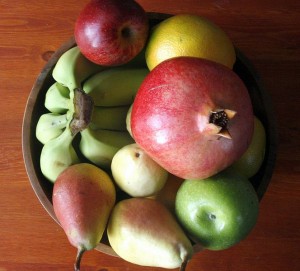Carbohydrates
Carbohydrates Provide Energy
The most important function of carbohydrates (carbs) is to provide energy for the body. In order to fuel the body with energy, carbohydrates are converted into glucose. Glucose is then transported through the body’s bloodstream and distributed to cells for conversion of energy.
Simple and Complex Carbohydrates
The body deals with carbohydrates at different speeds, depending on how quickly the carbohydrates are broken down in digestion. Due to their chemical structure, carbs are divided into simple carbohydrates (fast carbs) and complex carbohydrates (slow carbs).
Simple Carbohydrates – Fast Digesting Carbs
Simple carbohydrates are often referred to as fast digesting carbs because they are converted rapidly into the blood stream as glucose. Simple carbohydrates raise blood sugar quickly. The problem with simple carbohydrates (fast carbs) is that the blood sugar will soon drop again, and you will feel tired and hungry all over again. Simple carbohydrates (fast carbs) are found in all kinds of foods that contain a lot of sugar, such as candy, soda, juice, cakes, buns, biscuits, white bred and sugared cereals.
Complex Carbohydrates – Slow Digesting Carbs
 Complex carbohydrates are often referred to as slow digesting carbs because they take longer to digest. Complex carbohydrates help your body maintain a normal and more consistent blood sugar level. Stable blood sugar levels stable will stop your food cravings and help keeping your weight in a healthy range. Complex carbohydrates (slow carbs), are usually packed with vitamins, minerals and fibers. They are found in fruit, vegetables, beans, pasta, rice, potatoes, whole grain bread, unsweetened muesli and dark chocolate.
Complex carbohydrates are often referred to as slow digesting carbs because they take longer to digest. Complex carbohydrates help your body maintain a normal and more consistent blood sugar level. Stable blood sugar levels stable will stop your food cravings and help keeping your weight in a healthy range. Complex carbohydrates (slow carbs), are usually packed with vitamins, minerals and fibers. They are found in fruit, vegetables, beans, pasta, rice, potatoes, whole grain bread, unsweetened muesli and dark chocolate.
GI – Measures Fast and Slow Carbs
In order to measure fast and slow carbohydrates, one uses the GI (Glycemic Index). The Glycemic Index (GI) measures how fast carbohydrates raise your blood levels, and how much insulin is released. Foods with simple carbohydrates (fast carbs) have a high GI and foods with complex carbohydrates (slow carbs) have a low GI. By using this index, you may compare foods and make wiser choices to keep your blood sugar at a healthy level.
Healthy Diet with Carbohydrates
To summarize, consumption of sugar-rich foods should be limited since sugar contains no nutrition, just energy. A healthier diet contains less sugar-rich and refined products. Avoid foods with high GI such as white bread, jam, sugary cereals and candy. Better food choices are wholemeal bread, fruit, vegetables and pasta with low GI.
However, don’t stare blindly at the GI. Be aware that the GI does not consider the calories or nutritional value of food. Take Nutella (hazelnut-based sweet spread) as an example: Nutella has a lower GI than an apple, although apple is a healthier food choice.

 Facebook
Facebook  Twitter
Twitter  RSS
RSS








